[無料ダウンロード! √] sql server properties database settings 242216-Sql server properties database settings
From the list of Services in the middleManage your Dell EMC sites, products, and productlevel contacts using Company Administration The Connection properties tab is dependent on what "Server Type" you are connecting to I'm only going to go over the Database Engine properties here If you use other connection types I highly recommend reviewing what options you have Database Engine BOL Connect to database This allows you to change the database you initially connect to

Setting Sql Server Startup Parameters
Sql server properties database settings
Sql server properties database settings- SQL Server Database Engine https Prasad, Lock pages in memory is a group policy setting and not a sql server setting It stop windows from paging the data cache in sql server I saw in Sql server Properties in Process Tabe it was show as 0 to7 CPUs it means 8 Rightclick on the instance via SSMS and click properties You will see general information on the General tab Memory Settings When we switch to the Memory tab, we see "Minimum server memory (in MB)" and "Maximum server memory (in MB)" In this section, we can set the minimum and maximum memory that SQL Server Instance will use




Allow Remote Connections To Sql Server Calibration Control
Introduction There are a few things in SQL Server that require you to, or that at least are a lot simpler to make work if you turn the TRUSTWORTHY property of the database you are working with to onBut when you investigate a little further, you will find many articles and posts that warn you that evil will come upon you if you were to indeed turn this setting on As a side bar, the default is for SQL Server to give everyone a default of "Master" and that's how a lot of folks end up making stored procs inWith the repository set up, you can install SQL Server and the sqlcmd command line client by typing sudo apt install mssqlserver mssqltools unixodbcdev Once the installation is complete, you need to configure your new database instance
3 You are looking for DATABASEPROPERTY and SERVERPROPERTY Just list them in a SELECT statement like SELECT Service_Name = @@SERVICENAME , Server Name = SERVERPROPERTY ('ServerName') , Physical_Net_BIOS_Name = SERVERPROPERTY ('ComputerNamePhysicalNetBIOS') , Edition = SERVERPROPERTY ('Edition') , Leave this property at its default setting of False (off) at all times on production databases Auto Create Statistics When Auto Create Statistics is set to True (on), the default setting for this property, SQL Server automatically creates column statistics on any column used as a predicate in a queryIn the left pane of the Component Services window, select the Services (Local);
You can run the following query to determine the TRUSTWORTHY property of the MSDB database select name, TrustWorthySetting = case is_trustworthy_on when 1 then 'TrustWorthy setting is ON for MSDB' ELSE 'TrustWorthy setting is OFF for MSDB' END from sysdatabases where database_id = 4If you create a database on SQL Server 05, the default numeric directory is 90 The complete default path is C\Program Files\Microsoft SQL Server\90\Tools\Binn DBA user None Name of the database server administrator account, which is typically sa DBA password None Name of the password that is associated with the database user account Rightclick on TCP/IP and select Properties in the popup menu Open TCP/IP Properties Click the IP Address tab in the TCP/IP Properties dialog box Switch to IP Address tab Under IPAll section, you can see the TCP Port (default 1433) and you can edit the port of your server Configure default port for SQL Server




Iris Sql Server Database Maintenance



Sql Database
View orders and track your shipping status;MCSA SQL Server 12/14 Certification This associatelevel credential will be a significant achievement for any specialist who wants to work with a SQL Server If you aim for position of a database analyst or database developer and possess the skills to maintain and develop missioncritical environments, then this certification is for you Once enabled, double click on the TCP/IP protocol, or select properties of TCP/IP protocol And set port number to 1433, default TCP/IP port for SQL server Once it is done, you need to restart the SQL Server Now create a database with name "SONAR" using SQL Server management studio Next you need to download the SQL Server JDBC driver




Sql Server Documentation Tool Auditing Software




Connect To Ms Sql Server Datagrip
You can view your Minimum server memory and Maximum server memory in Server Properties or by querying sysconfigurations SELECT * FROM sys configurations WHERE configuration_id IN ( '1543', '1544' ) If you are using SSMS, you can see that in To view or change the properties of a database In Object Explorer, connect to an instance of the SQL Server Database Engine, and then expand that instance Expand Databases, rightclick the database to view, and then click Properties In the Database Properties dialog box, select a page to view theTo do this In the Windows Services console, doubleclick the Qlik Replicate Server service In the Log On tab, select This account and then enter the user name and password The specified user must be granted Read permission to the alternate backup folder (ie the shared network folder)



Enabling Boost Sql Server Priority Option Sql Bad Practices



Redbex Reference Manual Enabling Sql Server Authentication
From the Control Panel, select Administrative Tools > Component Services;In the Properties window, click the Value column for Advanced properties and then click the edit icon In the Value Advanced properties dialog box, click Add In the Name column, type CMSCRIPT_CS_ID In the Value column, type the user ID of the account under which the instance of the content store runs#6 SQL Server Installation And Database Setup When setting up a database, we need to keep data and log files separately The main reason for this is that writing and accessing data files is not sequential, whereas writing and accessing log files is sequential If we put them on the same drive we can't use them in an optimized way




Configuring A Microsoft Sql Server




Sql Server 14 Contained Databases
In the Server authentication section, turn on SQL Server and Windows Authentication mode;Note If you are using SQL server in a language other than English, you must change the language to English before you create the data warehouse In SQL Server Management Studio, rightclick the connection to the database server From the popup window, select Properties;In the Windows Local Security Policy tool, navigate to Security Settings > Local Policies > User Rights Assignment Add the account under which the SQL Service is running to the Perform volume maintenance tasks policy During SQL Server Setup In SQL Server Setup wizard, go to Server Configuration > Service Accounts




Microsoft Sql Server Bamboo Data Center And Server 8 1 Atlassian Documentation




Connect To Ms Sql Server Datagrip
Let us start by creating a new SQL Server Login 1 Using SQL Server Management Studio, connect to SQL Server Instance 2 Expand Security, and right click Logins to choose New Login option from the popup menu to open up Login dialog box as shown in the snippet below 3 This TSQL command will return the collation setting for the SQL Server instance SELECT CONVERT(sysname, serverproperty(N'collation')) AS Collation SQL Server Database Level This TSQL command will return a list of all databases and the collation settings SELECT name, collation_name FROM mastersysdatabases SQL Server Column Level xp_cmdshell – this setting is one of the most popular for the attacker, because it allows the authenticated SQL Server user to execute any operatingsystem command shell commands and return results as rows within the SQL client This would include being able to exfiltrate data out of SQL Server to a remote host




Default Backup Path Sql And Me



Changing Default Database File Locations In Sql Server Orange Matter
Best practice is to leave this setting at the default value of 0, to allow SQL to dynamically manage the amount of memory allocated for index creation operations If however SQL server has more RAM than it needs to run efficiently, the performance of some queries could be boosted if you increase this settingSelect Files Page on the left side panel as highlighted and then click on " " button to open up ChangeClick OK to exit the Server Properties dialog;




Online Documentation For Sql Manager For Sql Server Sql Manager




Nou Intuit Lekciya Administrirovanie Microsoft Sql Server
Language Settings in SQL Server How you set the language of a database depends on whether it is a contained database or not A contained database is a database that is isolated from other databases and from the instance of SQL Server that hosts the databaseThis SQL Server introduced this feature since version 121 Open SQL Server Management Studio and connect to the SQL instance Where your SharePoint Databases will be hosted 2 Right Click the Server name or the SQL instance and click Properties 3 Change Database Settings for "Database DefaultFire up Outlook client to add the Gmail email account to it Once Outlook is opened, click the File tab, and select Add Account In the Add Account dialog, select the Manual setup or additional server types option and click the Next button In the next step, choose the POP or IMAP option and click the Next button




Chris Webb S Bi Blog Setting Sql Server Connection String Properties In Power Bi And Ssas Tabular Modern Data Sources Chris Webb S Bi Blog




Kb Automation Engine How To Configure The Sql Server For Automation Engine Kb Automation Engine How To Configure The Sql Server For Automation Engine Wiki Esko Com
This is indeed a very interesting question as there are lots of SQL Server Agent properties but not many people are aware of the same There are two different ways to check various properties of SQL Server Agent Method 1 Right click on SQL Server Agent node and explore various properties Method 2 With TSQL 1 I came across a question in the Forum, how to calculate the growth of all databases in a server So, I set out with my research for the best solution Given below are the two methods to calculate the growth of all databases in the server Via sp_MSforeachdb Via sysmaster_files Given below is the workout that will help you understand the bestCreate and access a list of your products;




Ssms Sql Server Management Studio And Network Server Discovery Stack Overflow




Configure Database Connections Datagrip
So to find out the recovery model and status for all databases on my server I can run the following command and the get following results SELECT name, DATABASEPROPERTYEX(name, 'Recovery'), DATABASEPROPERTYEX(name, 'Status') FROM masterdbosysdatabases ORDER BY 1 Database RecoveryModel Right Click Databases and select 'New Database' Fill in settings as needed Open 'Options' tab and select collation Alter Database Level Collation TSQL USE master GO ALTER DATABASE AdventureWorks12 COLLATE SQL_Latin1_General_CP1_CS_AS GO SSMS Open properties by right clicking on properties Once there, access the 'Options Trustworthy is a database property, meaning it is set for individual databases By default the property if flagged as off and must be manually changed to
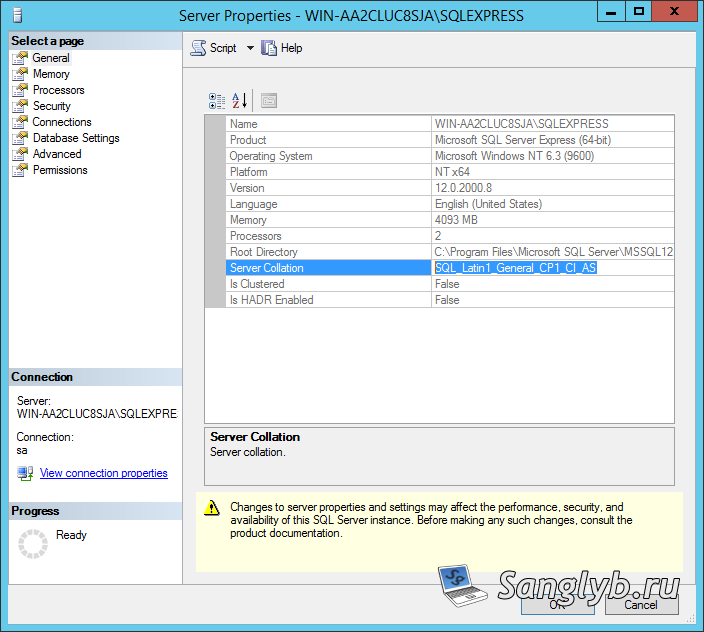



How To Change Mssql Collation Setting Without Reinstalling The Server Www Mytechnote Ru



1
Start Microsoft SQL Server Management Studio (MSSMS) On the File menu, click Connect Object Explorer Fill out the Connect to Server dialog box In the Server type list box, select Database Engine In the Server name text box, type the name of the SQL cluster server Configuration options requiring a restart of the SQL Server service are related to database locations and persisted trace flags Instancelevel settings Database default locations Instant file initialization Moving the physical location of system databases 4 You can add and remove database files without a service restartIn the Select a page pane, click Security;



2




How Can I Change Sql Server Configuration Parameters Via Remote Ssms Gitbook
Requirement After a new farm deployment, I had to raise the size and growth of all SharePoint content databases There were in the initial setup As per SQL Server best practices for SharePoint, we must set the SharePoint content databases' initial size and growth properties for better performance, which can be configured from database properties on eachUNION ALL SELECT PropertyName = N'IsQuotedIdentOn', PropertyAppliesToType = N'CHECK constraint, DEFAULT definition, TransactSQL function, TransactSQL procedure, table, TransactSQL trigger, view', PropertyDesc = N'Specifies that the quoted identifier setting for the object is ON, meaning double quotation marks delimit identifiers in all expressions involved in the objectTo Set Microsoft SQL Server Properties This procedure only applies to the App Server Database Select Start > All Programs > Microsoft SQL Server 12 > SQL Server Management Studio The SQL Server Management Studio dialog opens In the Object Explorer pane, select the server, rightclick and select Properties The Server Properties dialog opens




Parametry Konfiguracii Pamyati Servera Sql Server Microsoft Docs




How To Get Sql Server Instance Information
When you create a database in SQL Server and do not specify a file location for your data and log files SQL Server will rely on the default locations as defined in the server properties You can see these properties for yourself by rightclicking on the instance name inside of SQL Server Management Studio (SSMS) and navigating to the 'Database Settings' tabDatabase Settings If you set your SQL Server 70, SQL 00, and SQL Server 05 databases and transaction logs to grow automatically, keep in mind that every time this feature kicks in, it takes up a little extra CPU and I/O resources Ideally, you want to minimize how often automatic growth occurs One way to help do this is to size the When you create a new user database in SQL Server, the database compatibility level will be set to the default compatibility level for that version of SQL Server So for example, a new user database that is created in SQL Server 19 will have a database compatibility level of 150 The exception to this is if you have changed the compatibility




Modifying The Log Settings Of Microsoft Sql Server 08 R2




Kak Nastroit Sql Dlya Dell Security Management Server Dell Data Protection Enterprise Edition Server Dell Rossiya
Connect to SQL Server Instance using SQL Server Management Studio Expand Databases and rightclick the database and select Properties to open up Database Properties to change the AutoGrowth settings for a database In Database Properties, select Files Page on the left side panel and then click on the " " button to open up ChangeIn the Server Properties window, select Advanced and set the Default language entry to EnglishRight click the database and select Properties from the drop down list to open up Database Properties to change the AutoGrowth settings for a database as shown in the snippet below 3 In Database Properties;




Change Default Database File And Backup Paths In Sql Server On Linux




Database Administration Tool Extension For Windows In Azure Data Studio
This option allows you to toggle the sp_configure setting for the backup checksum default This feature makes it easier for you to enable the backup checksum default Recovery interval (minutes) Sets the maximum number of minutes per database to recover databases The default is 0, indicating automatic configuration by SQL Server Place orders quickly and easily; In SQL Server, the DATABASEPROPERTYEX () function returns the current setting of the specified database option or property for the specified database For example, you can use it to return the collation of a database, check the level of user access, etc It accepts two arguments the database, and the property you want information about Syntax




How To Change Backup Database File Path In Microsoft Sql Server Youtube




Sql Server 12 Ispolzovanie Management Studio S Database Engine
Viewing Database Options There are two main ways to view the various database options for each database on a single SQL Server instance, neither is ideal One option is to run the select all the rows from the sysdatabases management view SELECT * FROM sysdatabases This provides an output similar to this What I like to have returned is a result set of the database names and the "DESCRIPTION" value Selecting the database names are easy enough but I could use some help with joining in the extended property BEGIN SELECT ANAME FROM sysdatabases A Where LEFT (ANAME, 3) = 'MD_' END Results NAME DESCRIPTION MD_1 Initial MD_2 Secondary MD_3 Final




Chris Webb S Bi Blog Setting Azure Analysis Services Server Properties Not Visible In Sql Server Management Studio Chris Webb S Bi Blog




Enable Remote Connections To Sql Server Using Ip Address Timextender Support




Setting Sql Server Startup Parameters




Sql Server 08 Setting Default Location For Mdf Ldf Stack Overflow




Sql Server Property Defaultlanguagename Is Not Available Error On Saving Db Settings Database Administrators Stack Exchange




Nastrojka Microsoft Sql Server 05




Sql Server Best Practices For Sharepoint Server 16 Techtask




Exploring Sql Server 00 Configuration Properties Sqlservercentral




How To View Sql Server Database Properties




Setting The Sql Server Memory Limit




How Do I Change The Ip Address Listened By The Sql Server Database Esight V300r010c00spc0 300 And 500 Single Node System Software Installation Guide Windows 18 Huawei
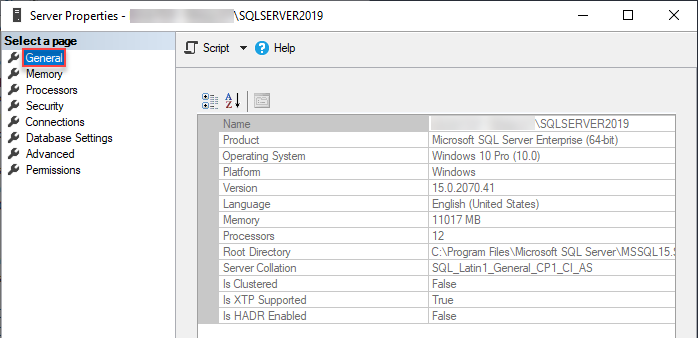



How To Get Sql Server Instance Information




Blog Surovogo Chelyabinskogo Programmista Kak Vklyuchit Mixed Mode Avtorizaciyu V Ms Sql Server 08 R2 Express Edition




Setting A Fixed Amount Of Memory For Sql Server




Online Documentation For Sql Manager For Sql Server Sql Manager




Allow Remote Connections To Sql Server Calibration Control




Sql Server Database Scoped Configurations Query Optimizer Fixes Sql Authority With Pinal Dave




Nou Intuit Lekciya Upravlenie Polzovatelyami I Sistemoj Bezopasnosti




Tsql Script Out Server Properties And Database Properties Stack Overflow



Setting A Microsoft Sql Standard Memory Limit For Usage




Sql Server Setup



1



Configuring Sql Server Cpu Utilization Technet Articles United States English Technet Wiki




Online Documentation For Sql Manager For Sql Server Sql Manager




Nou Intuit Lekciya Rezervnoe Kopirovanie Microsoft Sql Server




Sql Server Auto Shrink Database Property




Sql Server Configure The Backup Compression Default Server Configuration Option Sql Authority With Pinal Dave
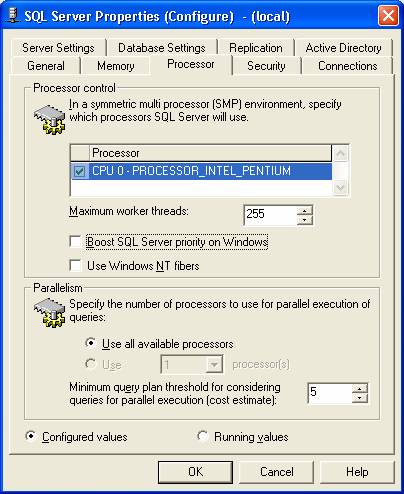



Exploring Sql Server 00 Configuration Properties Sqlservercentral




The Server Was Unable To Connect To The Database Because The Database Connection Settings Are Invalid Or Because Database Is Unreachable Thrown During Jts Setup



Microsoft Sql Server Configuration For Brightserver




Online Documentation For Sql Manager For Sql Server Sql Manager



Configuring Spring Boot For Microsoft Sql Server Spring Framework Guru




External Systems Configuration Guide Fortisiem 6 1 0 Fortinet Documentation Library




Sql Server 16 Database Scoped Configuration




Sqlskills Sql101 Creating Sql Server Databases Glenn Berry




Changing The Default Location For New Sql Databases Insource Solutions




Itcam Ms Sql Agent Configuring Mssql Login User




Microsoft Sql Server Strongdm Docs




Online Documentation For Sql Manager For Sql Server Sqlmanager




Nastrojka Sinhronizacii Dannyh Sql Azure Sql Database Microsoft Docs




Changing The Default Location For New Sql Databases Insource Solutions




Default Backup Path Sql And Me



Bases De Donnees Acceder A Une Base Qdv7 Avec Sql Server



Osnovy Sistemy Bezopasnosti Sql Server




Online Documentation For Sql Manager For Sql Server Sql Manager
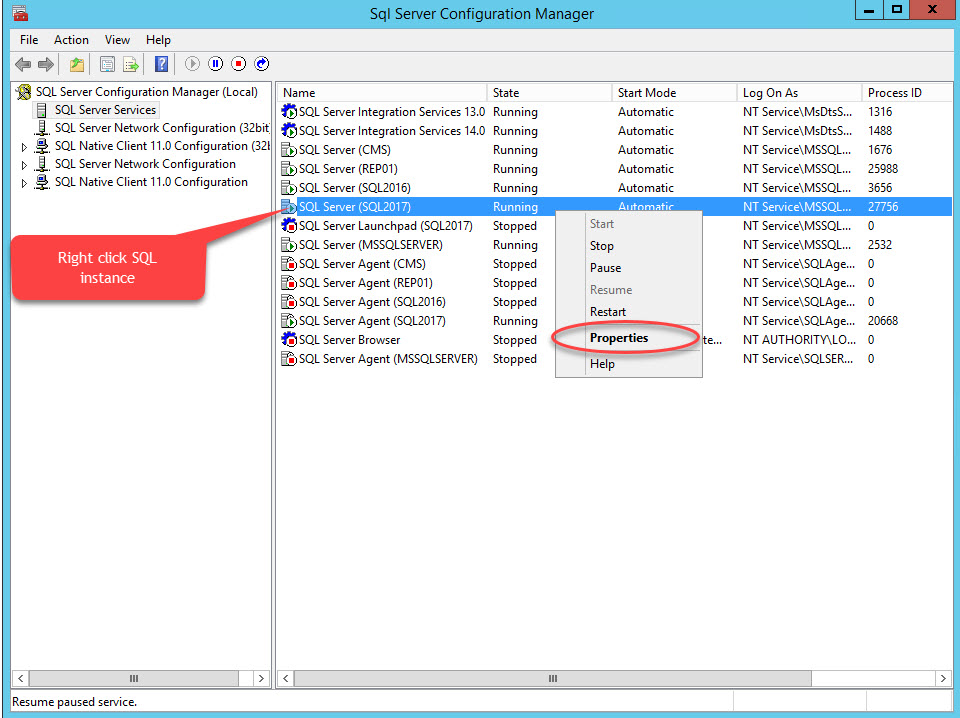



Storing Files In Sql Database Using Filestream Part 1 Coding Sight



How To Change The Default Mssql Directory For Database Files In Plesk Plesk Help Center




Configure The Cursor Threshold Option In Sql Server 08




New Database Setup On Sql Server Mendix Documentation




Ms Sql Server Setup Example




Collation Settings For Mssql Server Destination Theobald Software Knowledge Base




Sql Server Database Development In Visual Studio Codeproject




To Set Microsoft Sql Server Properties




Maximum Memory Setting In Sql Server Database Administrators Stack Exchange




Insufficient Memory Of The Sql Server When The Number Of Nes Exceeds 5000 Esight V300r010c00spc0 300 And 500 Single Node System Software Installation Guide Windows 18 Huawei




Setting Up Teamcity With Ms Sql Server Teamcity On Premises




How To Change Default Backup Directory Of Microsoft Sql Server Kimconnect Com




Explore The Databasepropertyex Function For Sql Server Databases




Connecting To A Sql Server Database Sisense For Cloud Data Teams




Configure Database Mirroring In Sql Server By Coding Sight Medium




Ssdt Programmatic Ponderings




How To Restore A Sql Server Database Backup Without Knowing The Destination Path Or Filenames




Sql Server Optimal Memory Settings For Sql Server Notes From The Field 006 Sql Authority With Pinal Dave




Nemnozhko Vsego Iz Zhizni Administratora Ms Sql Server Oshibka Pri Obnovlenii Ms Sql Server 0x851a0044




How Do I Find Sql Server Version




Online Documentation For Sql Manager For Sql Server Sql Manager




Worst Practice Allowing Autoclose On Sql Server Databases Itpro Today It News How Tos Trends Case Studies Career Tips More




Why Model Database Default Settings Customization Is Important For Sql Server Mytechmantra Com




Get Connection Properties From Sql Server Management Studio Youtube
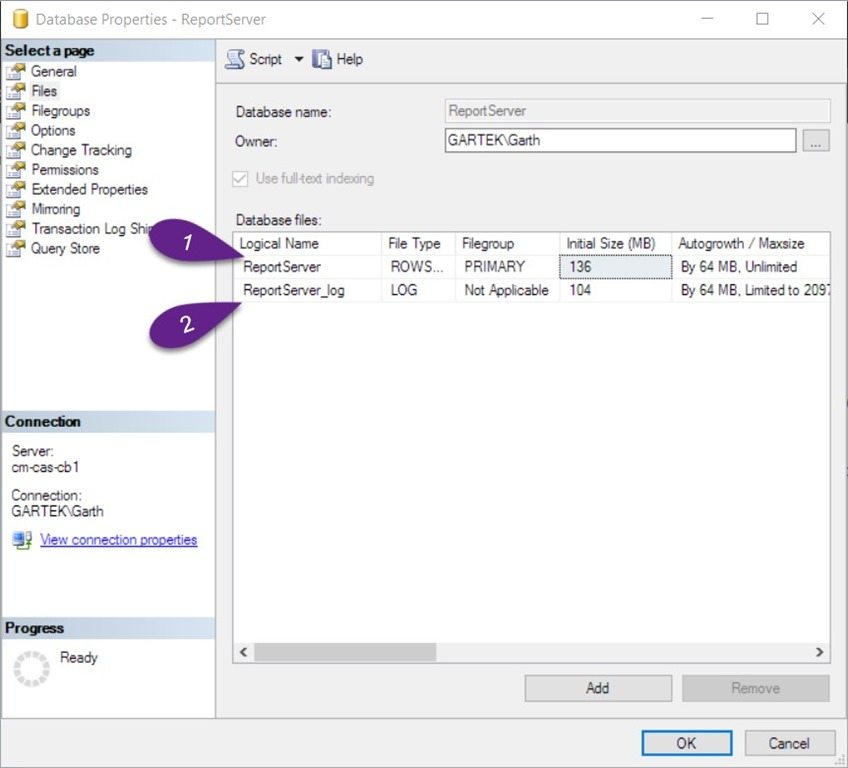



How To Define The Size Of A Sql Server Database Ask Garth




Nou Intuit Lekciya Prilozhenie A Parametry Konfigurirovaniya Microsoft Sql Server



Sql Server Connection String Lasopalion




Administering Sql Server 05 Server Properties Administering The Sql Server 05 Database Engine Informit
コメント
コメントを投稿